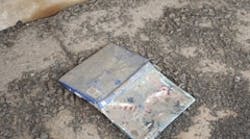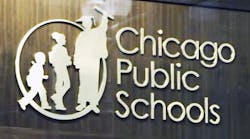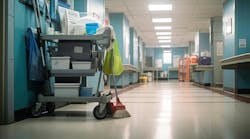A little more than two years ago, Hurricane Katrina set its sights on the New Orleans area, and the storm and flooding that followed killed more than 1,400 Louisiana residents, destroyed billions of dollars of property, and sent more than 1 million people fleeing the storm's devastation.
Many of those displaced in the days following the storm were among the 65,000 students who attended public schools in the struggling Orleans Parish district. As those families have returned to New Orleans over the last two years, they have found that the school system they left behind is no more.
The hurricane damage inflicted a deathblow to an education institution already teetering from academic failures, financial mismanagement, corruption and deteriorating facilities. The aggregation of schools that have assumed the mantle of educating New Orleans children still face challenges that existed before Katrina, but those rebuilding the city hope that reformed and revitalized public schools will lure displaced residents back and accelerate the area's recovery.
A clear sign of that hope came in September, when officials of the Recovery School District (RSD), the state-run entity that has assumed control of most New Orleans public schools, announced the five campuses that will be rebuilt, beginning later this year, as part of the “Quick Start” reconstruction program.
“We are serious about turning this school system around,” says Paul Vallas, superintendent of the Recovery District, “and as part of that, we are creating learning environments that are on par with the kind of schools suburban districts and more affluent communities have.”
Storm clouds
Katrina struck Louisiana on Aug. 29, 2005. Soon after, levees that kept water out of New Orleans gave way, and most of the parish — the Louisiana equivalent of a county — was flooded. The rising water also inundated neighboring St. Bernard Parish and other parts of the metropolitan area. The Louisiana Recovery Authority estimates that property losses in the state exceeded $100 billion.
The education sector was not spared. Among the losses were 40 schools that were destroyed and 835 schools that sustained damage, the authority says. A report from the Southern Education Foundation, “Education After Katrina,” estimates that 130,000 to 135,000 students missed five weeks of school after the storm, 50,000 to 57,000 of those missed as much as one-fourth of the school year, and 20,000 to 30,000 didn't attend school at all in 2005-06.
The foundation estimates that 60 to 70 percent of college students in the New Orleans area — 45,000 to 54,000 — dropped out of school for at least an entire semester. About 35,000 college students in Louisiana missed the entire 2005-06 school year, and another 26,000 remained out of school in 2006-07.
Private schools struggled to resume operations, too. According to data from the Greater New Orleans Community Data Center, 55 private schools were open in Orleans Parish in 2006-07, compared with 93 before the hurricane. Some of those that have reopened have moved away from the communities they had served.
Holy Cross High School, which was in the Lower Ninth Ward of New Orleans, considered moving to Kenner in Jefferson Parish, but decided to move to a site in the Gentilly section of New Orleans. Archbishop Hannan High School's campus in Meraux, which was the only Catholic high school in St. Bernard Parish, was destroyed in the flood, and officials decided to relocate the school to St. Tammany Parish. The archdiocese broke ground this summer for a new campus in Covington.
As the focus turned to recovery, many of those who had evacuated did not come back. In July 2007, GCR & Associates estimated the population of Orleans Parish at 273,598 — about 181,000 less than July 2005.
Under those difficult circumstances, school and university administrators had to assess whether they had any facilities they could reopen, whether they still had any employees who could get the schools open, and how many students would show up if the school year resumed.
This would have been a daunting task for any school system; for a struggling operation such as the Orleans Parish district, it was a task that decisionmakers in Louisiana felt was unachievable. Before Katrina struck, the school system that served New Orleans had seen its enrollment decline by 25 percent over 10 years, and three-fourths of the students that remained were eligible for free and reduced-price lunch. Its buildings were old and falling apart. The district had eight superintendents between 1998 and 2005. With a debt of $265 million and on the brink of bankruptcy, the state brought in a private turnaround firm, Alvarez & Marsal, to deal with the district's chaotic finances.
“To many in the community, (the district) had become a school system of last resort,” according to “The State of Public Education in New Orleans.”
The instability and uncertainty caused by Katrina gave the state the impetus it needed to create a different system to get public schools in New Orleans back on the path to success.
Trying to recover
In November 2005, the Louisiana legislature gave the state more power to deal with failing schools. The state-run Recovery School District now controls 112 public schools in Orleans Parish. The Orleans Parish district was left with five schools that it operated directly, and 12 charter schools that it oversaw.
By the end of the 2006-07 school year, the Recovery District was operating 22 schools directly and had authorized 17 charter schools.
According to “The State of Public Education in New Orleans,” state officials saw the Recovery District as a system composed primarily of charter schools. “However, by early 2006, when it became apparent that there would not be enough high-quality charter school operators, the RSD was forced to quickly reorient its structure to become a district able to open and operate schools,” the report says.
The Recovery District wasn't equipped for this mission, the report says. Its staff was inexperienced in opening schools and running a school district. “During the 2006-07 school year, there was more than 100 percent turnover in direct reports to the RSD superintendent,” the report says. “Several key positions … were unfilled for much of the school year.”
The Recovery District also was plagued by regulations that slowed its efforts to address problems. In the 2006-07 year, many schools had inadequate food-service operations and bathrooms. “The RSD has been incapable of providing regular and timely operational support to the schools it operates,” the report says.
In addition, Recovery district schools must accept any student, while many charters and schools run by Orleans Parish have selective enrollments or enrollment caps.
“For many in the community, the RSD-operated schools are viewed as an unofficial ‘dumping ground’ for students with behavioral or academic challenges,” the report states.
Seeking experienced leadership, the state's new education superintendent, Paul Pastorek, persuaded Paul Vallas to take over the Recovery District this summer. Vallas has served as the CEO of the Philadelphia and Chicago school districts, and has won a national reputation for improving operations and carrying out education reforms in those large urban institutions.
With the help of private firms and the Louisiana National Guard, which served as “an in-house facilities department” for the Recovery District, Pastorek and Vallas focused on getting enough school facilities in shape for the 2007-08 year. Last month, the district began the year operating 34 schools; it is overseeing another 27 charter schools.
“Getting to this point was no easy feat,” Pastorek says. “There was never a shortage of challenges to overcome, but we could not give up because of what was at stake — the educational future of our children.”
As of September, about 34,000 students were attending public schools in New Orleans; 13,500 students were in RSD-operated schools, 10,800 in RSD charters, and 9,900 in OPSB schools, either charter or non-charter.
Colleges and universities
Higher-education institutions also have had varying degrees of success getting back on their feet after Katrina. The Louisiana Recovery Authority says that enrollment for the state's colleges and universities in 2005-06 dropped to 177,230 from 214,744 in 2004-05. In 2006-07, enrollment rebounded to 196,332. The schools that are run by the state have to compete with other state facilities that need repairs.
Southern University at New Orleans (SUNO) claims the unwelcome distinction of being the only higher-education institution in the city that has not yet returned to its campus. It has been operating out of a temporary campus that consists of 45 trailers constructed by the Federal Emergency Management Agency and the U.S. Army Corps of Engineers. Its enrollment fell from 3,600 before Katrina to 2,750 in fall 2006.
As SUNO tries to overcome bureaucratic hurdles and speed up repairs, the school has received a $44 million federal loan that will enable it to build student housing on campus. “This will enable SUNO to offer residential student housing like all other four-year institutions in the state,” says Chancellor Victor Ukpolo.
At Tulane University, officials have estimated hurricane-related losses at $650 million. Its 2006-07 enrollment was 10,606 — about 80 percent of its pre-Katrina numbers. Earlier this summer, the university announced that 1,375 high school seniors have committed to enroll as freshmen in 2007-08. That surpasses last year's class of 882 freshmen by 56 percent.
The University of New Orleans saw its enrollment fall from 17,142 before the hurricane to 11,747 in fall 2006. Dillard University fell from 2,155 in 2005 to 1,124 in fall 2006.
Problems remain
The Recovery District has made progress in opening more schools for 2007-08, but obstacles remain.
A report this summer by the American Federation of Teachers, “No Experience Necessary: How the New Orleans School Takeover Experiment Devalues Experienced Teachers,” contends that the school recovery effort is hindered by a lack of experienced teachers. The report is especially critical of the decision in December 2005 to fire most of the Orleans Parish district's teachers and other employees.
“Before Katrina, well-credentialed veteran teachers already were in short supply in the city's schools,” the report asserts. “However, the post-Katrina education decisions made by Louisiana officials turned a pre-existing challenge — retaining experienced teachers — into a full-blown crisis.”
The teachers union also contends that the Recovery District will not be able to attract high-quality teachers as long as some schools operate under a separate system.
“Charter and other schools use enrollment caps, selective admission policies, class-size limits and other policies to cherry-pick students and evade the problems or mid-year enrollments,” the report says.
New beginning
The most visible sign of recovery for New Orleans schools will come when it opens new facilities. Pastorek and Vallas announced that construction would begin by the end of 2007 on five campuses. Hughes Elementary and Landry High School will be new buildings, as will Lake Area, which had been a middle school, but will return as a high school. Wilson and Williams elementary schools will undergo major renovations to “as good as new” condition. FEMA funds will pay for the new schools.
“My goal was to identify a handful of sites where we know we are going to need schools and where the economics and FEMA reimbursement formulas allow us to build new schools,” says Pastorek.
Each of the five schools is in a community where population is rebounding. As construction begins, officials also are formulating a longer-range plan for restoring facilities, and Pastorek says some of the 12 projects not selected this time may be part of the next phase of new construction.
“For years, people have commented on the unacceptable physical condition of our schools,” says Pastorek. “For years, they have continued to deteriorate. This year, we have begun renovating schools to a much higher standard, and now we will break ground on new schools by the end of the year. We want these schools to stand as a symbol of the value we place on our children and their education — and as a symbol of what's possible for the future of our city.”
Kennedy, staff writer, can be reached at [email protected].
Profile in courage
New Orleans public schools were not the only ones devastated in the aftermath of Hurricane Katrina. Floodwaters engulfed neighboring St. Bernard Parish, and in the days after the storm, Superintendent Doris Voitier and other school district officials watched from the second floor of Chalmette High School as the rising tide swallowed much of their community.
According to the Louisiana Recovery Authority, St. Bernard had the highest percentage of population loss of any parish; the number of residents in St. Bernard dropped from 65,000 before the hurricane to 15,500 in July 2006. By July 2007, the number of households receiving mail was only 36.5 percent of the August 2005 number, according to the U.S. Postal Service.
Whether the population will rebound to pre-hurricane levels is uncertain; but for those who have come back, the St. Bernard School District is striving to make sure it has the facilities to accommodate students.
In August 2007, the district reopened three more schools and now has five facilities that are serving about 4,000 students.
That is less than half of the 8,800 students who attended St. Bernard public schools before the hurricane, but the school system has come a long way since November 2005, when it overcame bureaucratic snags and inaction to open makeshift classrooms in trailers on the parking lot of Chalmette High School. Just 11 weeks after the hurricane, about 330 students showed up to what was being called St. Bernard Unified School, and school officials made sure that those who showed up were given a hot meal for breakfast.
The district made repairs to Chalmette, and in January 2006, moved the unified school into the high school facility. For the 2006-07 year, St. Bernard reopened Andrew Jackson Elementary School in Chalmette, and the Chalmette High campus accommodated grades 7 to 12. Repair work continued on other campuses, and for 2007-08, J.F. Gauthier Elementary reopened in Poydras, and a renovated N.P. Trist Middle School in Meraux is serving grades 6 and 7. C.F. Rowley School has reopened and houses the district's alternative program.
Helping the district in its recovery are hundreds of people and organizations that have donated money and supplies to St. Bernard. The district's website lists them all — from an individual gift of $10 from a Maryland resident, to a $1 million donation from a local oil company.
As enrollment rises, district officials plan to repair and reopen more facilities. The system's rebuilding plan calls for razing and rebuilding both Davis Elementary School in Meraux and Smith Elementary in Violet. Lacoste Elementary will be torn down, and the site will be used for an extension of Chalmette High School.
For her efforts getting the school system back on its feet, Voitier received a 2007 John F. Kennedy Profile in Courage award from the Kennedy Foundation Library.
“She vowed that the children of St. Bernard would have classrooms waiting for them when they returned,” U.S. Sen. Edward Kennedy said of Voitier. “Against all odds, with little or no help from officials and few resources, she persisted, and she succeeded.”
Return brings smiles
Following the escape route of many area residents, the Louisiana State University (LSU) School of Dentistry fled flood-ravaged New Orleans in 2005 and ended up in Baton Rouge.
After two years in exile, the university has renovated the facility, and the program was able to return to its New Orleans home in August 2007. The school anticipates an enrollment of 374 students, slightly less than the 380 students who were enrolled when Katrina struck.
“After assessing the damage left behind by two weeks of floodwaters, no one would have blamed us if LSU had walked away from this structure,” outgoing LSU System President William Jenkins said in August. “I was determined within hours after Katrina's winds subsided, however, that the LSU Dental School and our Health Science Center would return to New Orleans. I told our people, ‘You're going home.’ And we have.”
In September, the dental school reopened its New Orleans clinic, which serves members of the public. School officials have said that the clinic that opened in Baton Rouge two years ago will remain in operation indefinitely.


